Have you ever tried shaving soap? If you're like me, probably not. Shaving soap, a vital component of the wet shaving method, is generally marketed to guys. Take a look for it online and you'll find a pile of strange-sounding scents (pine tar, anyone?). It's such a shame, though. Wet shaving with a shaving soap bar is less expensive, more environmentally friendly, and easier on the skin than conventional shaving methods. Why should guys have all the fun?
Ladies, it's time to take a fresh look at how you approach your body hair. Don't fret: I'm here to guide you through the finer points. Here's everything you need to know about using shaving soap.
Shaving Soap Bars for Women:
Part One - The Benefits
Why is wet shaving a better choice for women than conventional methods? I've got three big reasons for you.
- Better Ingredients: We all know those canisters of pink goop. You rub their contents on your legs, shave away, and still end up with ingrown hairs and razor burn. It probably won't surprise you to learn that conventional shaving gels are filled with toxic and problematic chemicals. Between the artificial fragrance, the sulfates, and the triethanolamine (a hormone-disrupting foaming agent), there's plenty of reason to ditch the goop and turn to a more natural solution.
- Better for the Environment: All those nasty chemicals aren't particularly good for the environment either. They all go somewhere when you wash them down the drain. Bar soaps last longer and require much less packaging than bottles of gel, leading to less waste when you make the switch.
- Better for Your Skin: We don't like to talk about it, but just about any woman you've met has had a painful experience with a conventional razor. Whether it was irritated skin, razor burns, nicks and cuts, or ingrown hairs, it's no secret that shaving is not the most comfortable activity. Wet shaving with a bar soap changes all that. Applying well-lathered soap with a shaving brush is so much more pleasant than slapping on a handful of cold gel. Single blade safety razors give you a closer shave without subjecting your skin to harsh treatment. Best of all, this method saves you from the skin-irritating ingredients you'll find in conventional gels - you know, the products that are supposed to prevent your skin from becoming irritated.
Part Two - The Equipment
Okay, have I sold you on switching up your shaving routine yet? Good. Let's get into the nitty-gritty. Wet shaving isn't an exact term. Depending on your definition its meaning can be very specific or very broad. For this blog, I'm using it to mean "shaving with a bar of shave soap, a shaving brush, a razor, and an abundance of water." Other definitions may vary. So let's break it down. Here's the equipment you'll need to get started:
Razor:
There are a variety of razors you can use for wet shaving. The most traditional is the double edged safety razor. It's a stainless steel razor made up of a handle, a head, and a blade. Unlike cartridge razors, which go over the skin 3-5 times per swipe, a safety razor only contacts your skin once. This gives you tons of control over how often a blade comes in contact with your skin. Less contact equals less irritation. And unlike cartridges, the only part disposable part of a safety razor is the blade itself. Replace at the same rate you would a conventional cartridge and you'll save a ton of money and waste.
Double-edged safety razors aren't the only disposable alternative. Single-edged razors and straight razors are also viable choices. I can't tell you which one is going to work best for you, but I can encourage you to do some research, read reviews, and choose from there. Many razor makers offer starter kits, which can be a great way to start if you're new to wet shaving.
Shaving Brush:
One of the reasons wet shaving is such an awesome experience is how good it feels to apply warm, soft soap to your legs with a shaving brush. Generally made out of badger, horse, or boar hair, shaving brushes are designed to whip a bar soap into a lather, then apply said lather to your skin. Unfortunately there are few shaving brushes out there designed for body hair removal. You're most likely to find brushes made for shaving facial hair. They'll be smaller than ideal, but they'll still do the trick. I recommend looking for badger brushes specifically. They hold and spread lather more effectively than other types of bristles, which is just what you need if you're covering a large amount of skin.
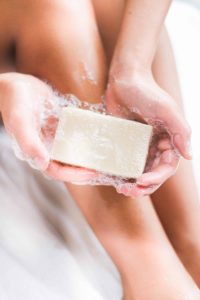
Bar of Shaving Soap:
Want a bunch of warm, luxurious lather? Then you need to get yourself the right bar. While high quality shaving creams can also be a good choice, I give bar soaps the edge for a few reasons. First, they're more economical (which is especially nice for shaving larger areas). Second, they have less packaging and are more environmentally friendly. Finally, it's ridiculously fun to use them.
Choosing a soap comes down to personal preference. Most shaving soaps out there are marketed to men, but that doesn't mean you can't find an aroma you like. As with any other personal care product, choose a soap that contains safe, natural ingredients.
An Abundance of Water:
Turn on your shower. Done.
Part Three - The Technique
So you've got a razor, a brush, and a bar of soap. How does that translate into the perfect shave? To be honest, it'll take a little more work than your standard shaving setup. But it's fun, satisfying, and feels amazing. Promise.
Here's the routine:
- Prep your skin
Don't undervalue the "wet" part of wet shaving. Your skin is going to end up healthier, happier, and much more comfortable if you take the time to saturate it first. Fortunately, showers make this easy. Hop in, do your regular routine, and shave before you get out. One more step: apply some of your preferred exfoliating wash to your legs before you shave. This will get rid of any dead skin, giving your razor the smoothest possible surface to skate over.
Once your skin is prepped you can either stay in the shower or hop out and use the sink for running water. Whatever floats your boat!
- Lather up
This step starts with a wet brush. Either bring it in the shower or soak it in hot water. Wring out any excess so it ends up damp but not sopping.
Next, get your soap. I highly, highly recommend keeping your soap in a case or bowl. This will make sure it all stays in one place (instead of running off down the drain). Load your brush by swirling it on top of the soap for 30 seconds or so. Now it's time to make a choice: do you work up a lather in a bowl, or do you work up a lather on your legs? Building your lather in the bowl is the traditional method, but lathering directly on your skin gives you an extra layer of exfoliation.
If you choose to lather on your legs, skip to the next step. If you like the idea of the bowl method, swirl your loaded brush in the bottom of a bowl to start working up a lather. It's going to look pretty measly at first, but keep going for 20 to 30 seconds and those big bubbles will shift to a soft, dense, luxurious lather.
- Apply your soap
If you lathered your soap in a bowl, use your brush to apply it to your skin. If you decided to build your lather directly on your skin, start by rubbing your loaded brush on the area you want to shave. Using a small amount of pressure, keep rubbing in a circular motion until a lather starts to form. You're looking for something with the consistency of whipped cream. Once the relevant area is covered with lather, you're good to go.

- Shave away
Hold your razor at about 30 degrees. Pull it over your lathered skin very, very gently. Use short strokes and don't apply any pressure. The beauty of a stainless steel razor is that it's heavy enough to do the work for you. Traditionally, wet shaving is done with the grain. This means you move the razor in the same direction hair grows. Doing so reduces irritation and razor burn. I highly recommend going with the grain for sensitive areas (including the armpits and bikini line). But I'm not going to lie: shaving with the grain on your legs is awkward, and it won't give you the same smooth finish as what you'd get going against it. You know your skin.
Experiment with both methods to find out what works best for you. However you shave, make sure to rinse off your razor after every few swipes. This gets rid of any hair and lather that might get in your way. When you're done shaving, rinse off any extra soap and enjoy your newly smooth skin.
Have You Tried a Shaving Soap Bar?
Do you have any experience with wet shaving body hair? I want to hear how it went! Let me know about it in the comments below. Happy shaving!
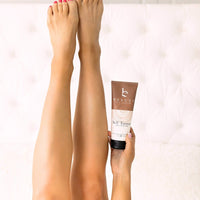








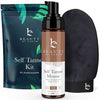

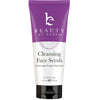


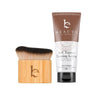







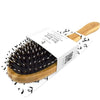
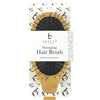
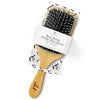

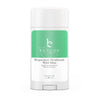



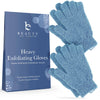
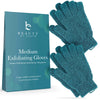
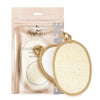
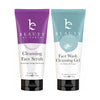










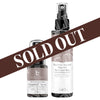




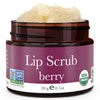
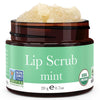
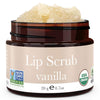





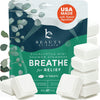
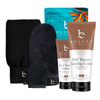
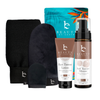


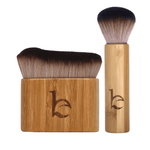
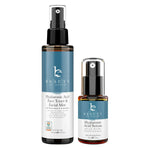

















join the conversation